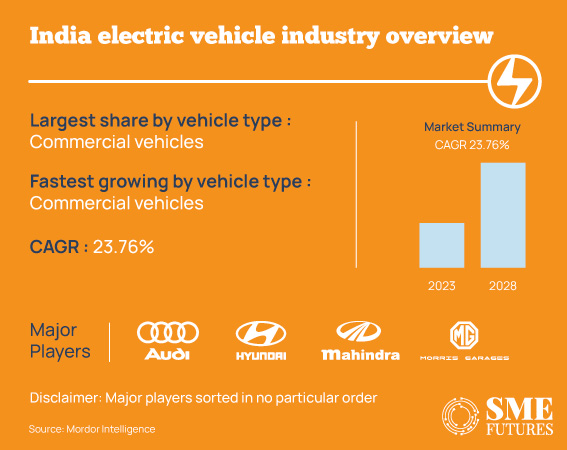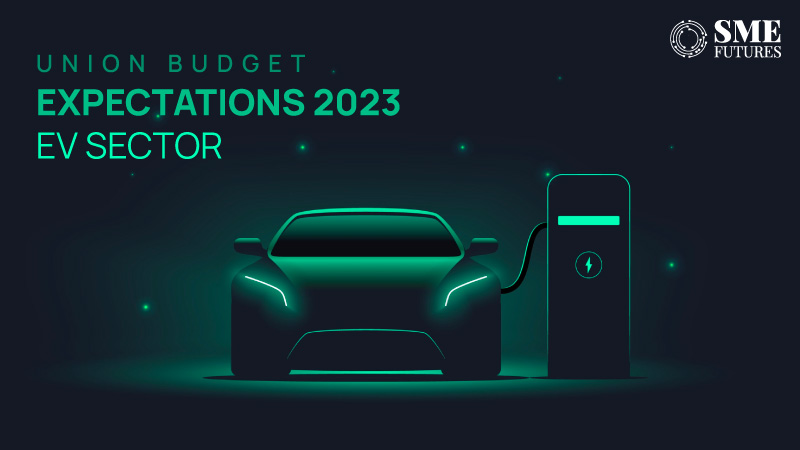The Indian Electric Vehicle (EV) industry is waiting with bated breath for the Union Budget 2023. This year, there are new hopes, excitement and expectations from it from the players within this industry. The Union Budget 2023 is also the last budget of the government in power before the 2024 Lok Sabha elections and all eyes are on it as the countdown begins. This year’s Union Budget will also be a budget where the government can allocate funds without the looming fear of covering the pandemic’s pitfalls.
The auto industry players expect to receive continued support from the government for the continued growth of the EV sector. India is currently the fourth largest producer of automobiles globally. The industry is estimated to be worth around $222 billion.
Government initiatives in 2022
There have been a host of initiatives taken by the government in 2022 to propel the EV industry. The subsidies under the FAME-II scheme provided to EVs have helped increase the number of consumers. Besides the incentives under the scheme, some state governments have also offered tax advantages to EVs, giving them an edge over conventional vehicles.

“Great government initiatives in 2022, including robust infrastructure development, backing up the global collaborations for EV and EV components manufacturing and easing FDI norms and JV formulations to attract more investment in developing the Semiconductor Mission, have turned the industry into an astronomical $222 billion worth market,” says Pankaj Gupta of Mufin Green Finance.

A slew of initiatives has helped accelerate the sales of EVs in the country and the prediction graph shows that this sector will keep booming in the coming future.
Extension of FAME-II scheme
The Fame-II scheme is promoting the adoption of EVs by providing financial incentives and charging infrastructure development. The scheme has made EVs more affordable and convenient, leading to a reduction in air pollution and less dependence on fossil fuels. The scheme is set to continue in the Union Budget of 2023, with an extension of its implementation period and an increase in its total outlay, further backing the growth of the EV industry in India and solidifying the country’s position in the field.
Also Read: Adani-Hindenburg havoc: Know impacts on market and Adani Group
The industry is also looking forward to the extension of the validity of the FAME-II scheme, which will encourage the quicker adoption and manufacturing of EVs. “The new FAME-II scheme will also definitely encourage the faster adoption and manufacturing of EVs, but an extension on the validity of FAME-II would be favourable to fully catalyse the penetration of the subsidy,” Gupta adds.
EV industry expectations from Budget 2023-24
Priority sector lending for EVs and reduction of interest rates
One of the key expectations from the industry is for the EV sector to be included in priority sector lending. “Making it a priority sector will welcome more lenders to enter into this space as low-cost capital is something that everybody looks at as an opportunity. Eventually, it will attract banks to aid in indirect EV financing, enabling the growth of EV penetration in India or of EV financers by leaps and bounds,” says Mukesh Taneja, Co-founder & CEO, GT Force.
The industry players are also eyeing a reduction of the interest rates that the EV customers are being charged. If the government does this, it will be a major push for the EV sector.
India needs the right kind of fiscal support to accelerate its recovery. “We expect the budget to extend the Corporate Tax Benefits for Infrastructure companies and reduce the GST from 18 per cent to 12 per cent for the logistics sector. This GST reduction will go a long way in managing the inverted GST impact ailing the EV logistics sector,” says Maxson Lewis, Managing Director & CEO, Magent.
Rationalise GST
The electric vehicle industry currently faces an inverted GST structure, with components such as Li-ion batteries and raw materials facing an input tax of 18 per cent, while the output tax on EVs is 5 per cent.
According to Mohan Ramaswamy, CEO and Co-Founder, Rubix Data Sciences the inverted GST has resulted in working capital blockage for OEMs. “Unfortunately, the effect filters down to MSMEs that are engaged in manufacturing vehicle parts, resulting in delayed payments to them, which affects their already strapped cash flows. Moreover, roughly 40 per cent of the auto parts are taxed at 28 per cent GST, while the rest come under the 18 per cent slab, which is resulting in a grey market along with the proliferation of spurious parts. Considering that MSMEs contribute roughly a fourth of the auto component industry’s revenue, we feel there should be a relook at the GST structure for the auto sector, specifically that of auto components,” he said.
More focus on charging infrastructure and the need for a battery swapping policy
Another thing that the industry is looking forward to is the growth and development of EV-related infrastructure. Although, the EV sector is growing at a tremendous rate, there is concern among consumers surrounding the unavailability of proper charging hotspots. This a major aspect that the government needs to work on. Making charging spots for EVs convenient and easily accessible will only help in increasing the popularity of the industry. This will also facilitate the switch from conventional automobiles to EVs.
“It is imperative to build a wider web of networks for charging infrastructure. We also think that the future growth of EVs hinges on the enhanced support provided to battery manufacturers, especially with the new safety norms in place,” adds in Rajesh Saitya, Co-founder & COO, GT Force.
Mandating the installation of EV charging points in all existing and upcoming housing estates and commercial properties, will also be important for EV penetration. “A crucial necessity for EV penetration is to facilitate a vast system of charging points; thus, there is also a massive need to mandate the installation of EV charging points in all existing and upcoming housing estates and commercial properties,” he points out.
Also Read: What is naked short selling, and why its in limelight in Indian markets
The industry leaders have raised the issue of the limited battery swapping infrastructure in India as a hindrance to the growth of the electric vehicle market. They have suggested that the government should introduce a battery swapping policy and recognise batteries as a service to develop the EV infrastructure and make EVs more convenient and affordable for consumers.
“We also believe that introducing the battery swapping policy and recognising batteries as a service will help develop EV infrastructure and increase the use of EVs, as the EV industry has been providing high-quality and cost-effective sustainable energy solutions,” adds in Ashutosh Verma, Founder of Exalta.
Fortifying localised supply chains
According to a study by the Confederation of Indian Industry (CII), the production of EVs and their components in India has the potential to generate up to 65,000 jobs and bring in investments worth $4.5 billion by 2025. Furthermore, the Government of India has also set an ambitious target of 30 per cent localisation in the EV value chain by 2025 under the National Electric Mobility Mission Plan (NEMMP) 2020.
By strengthening the local supply chains for electric vehicles, the cost of ownership can be reduced and the nation’s dependence on imports can be decreased, while also creating jobs and boosting the local economy.
“To emerge stronger in realising the fullest potential of the ongoing electric mobility revolution, it is imperative that as a nation, India must make its manufacturing capacities stronger and fortify its localised supply chains,” says Kalyan C Korimerla, MD & Co-Promoter, Etrio Automobiles.
“Fortifying localised supply chains and making key components for EVs locally, will not only bring down the cost of EV ownership but will also help the nation in reducing its import dependency, ” he further adds.
The bottom line
“While multiple regulations for the auto industry are anticipated in the upcoming budget, the central emphasis should, however, remain on the evolving electric vehicle space, given its potential to decarbonise India’s transportation industry,” says Taneja.
The Indian automobile industry believes that the Union Budget 2023 should continue to focus on the evolving EV space and support the industry with EV-friendly policies. This will help maintain the industry’s ongoing solid growth momentum, decarbonise India’s transportation industry and make EVs more affordable for the consumers. The industry’s leaders have highlighted the importance of government initiatives that encompass priority sector lending, a reduction in interest rates, an extension of the validity of the FAME-II scheme, a boosting of the charging infrastructure, the formulation of a battery swapping policy and the fortification of the localised supply chains.
By addressing these areas, the government can continue to give an impetus to the growth of the Electric Vehicles market in India and contribute to the country’s goal of promoting clean mobility.











